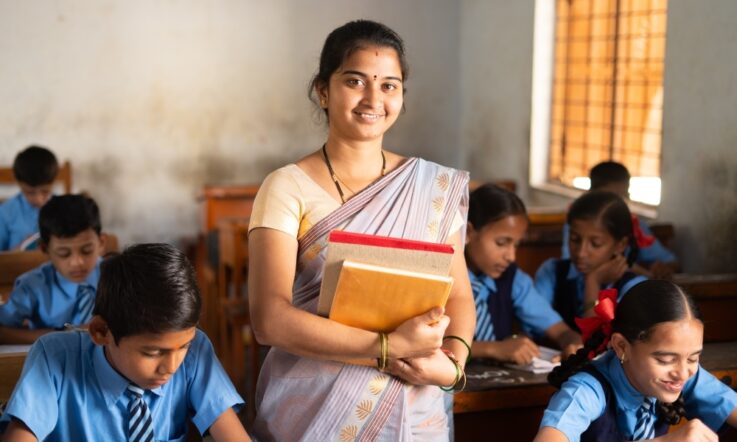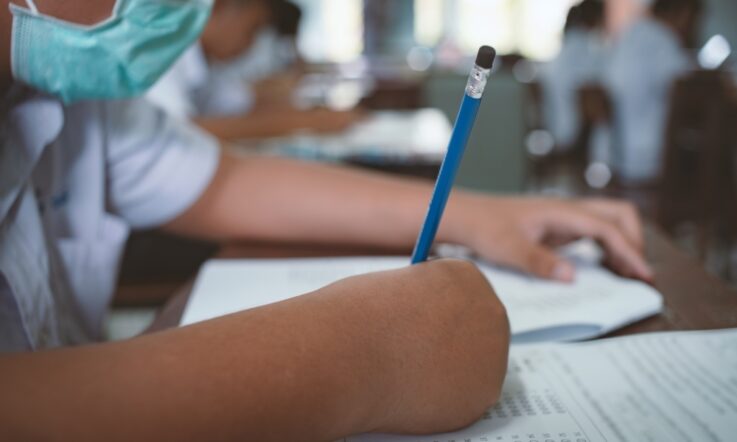The issue of teacher wellbeing has received renewed attention since the COVID-19 pandemic. Nurturing a supportive work culture is a high priority for schools if they want to retain staff.
Suchita Malakar is Principal of Podar International School in Powai, Mumbai. The school has around 700 students and 55 teachers and follows the Cambridge curriculum.
The pandemic heightened the need to strengthen wellbeing programs as many teachers feared losing jobs and experienced personal challenges. It was slightly easier for Malakar’s school to tackle new challenges as they had ingrained teacher wellbeing through different events and activities since its foundation.
She had already built an organisational environment where teachers can easily approach her and reach out to colleagues in times of need. In the post-pandemic era, she continues to nurture an inclusive work culture at her school through various initiatives.
‘The idea of wellbeing starts when you are one-on-one with a teacher. Then you give them that space to share their concerns and talk to you,’ she tells Teacher.
Malakar has over 25 years’ experience as a teacher. She has noticed in the past that many school principals have distanced themselves from teachers, as they have moved on to undertake administrative roles. This, she feels, is detrimental to the school. ‘Unless you [school principal] do not wear the hat of the teacher … you will never be able to understand their [teachers’] wellbeing.’
From the day a teacher joins Podar they know about its open-door policy. There is a hierarchy between teachers, coordinators, and head teachers, but at the same time teachers know that they can speak with the principal ‘when they feel unheard’. The principal’s phone number is available in the teachers’ group, which they can call even outside hours.
‘Even at 9:30 at night … maybe [teachers want to] go on leave or something … they needed to speak to me, so they can,’ Malakar explains. ‘They directly approach me … you can actually let them [feel comfortable] that they are in a safe zone. So that is where the wellbeing of any individual starts.’
Teachers are told to consider themselves part of the family of students. Similarly, the principal strongly believes that the school should become the family for teachers and says this is particularly important in a female-dominated workforce.
‘… a child who does not attend school for even 2 days, the teacher does call up and inquire what has happened. “Why is the child not attending? I hope everything is fine?” Doesn’t the same go for us as well? If the teacher is not able to join us … I inquire about their wellbeing. Are they well? How is it working with them?
‘Even if I hear of a problem from the coordinators that certain teachers are going through something in their personal lives, I wait for some time and then after a week or so I call the teacher to my office and I say that I've heard something. Would you like to share or not? … You have to make it clear that I'm here to help. So, that is one of the prerequisites of being a good leader in an educational institution.’
At Podar, teachers attend several workshops at the beginning of the academic year. These cover curricula topics as well as general ones on workplace practices. They help new teachers understand the environment of the school and it work culture.
‘I had a number of workshops on wellbeing … I had a number of workshops on working as a team, working in pairs, because teachers often have to collaborate together in class teaching. So, these kinds of workshops are a part of our entire team building process,’ Malakar says.
‘We have something called circle time, particularly on Saturdays [with teachers]. You know, we make a kind of a circle like we do it for the students, and teachers just speak about what they would like to, or we give them a queue to speak about “what makes me happy”.’
The school counsellor also has regular workshops with teachers.
From Christmas to Diwali, the school celebrates every festival with both students and teachers. There is a separate celebration for teachers after school hours.
‘A group of teachers are made in charge. So, they are going to kind of execute the entire event, implement the entire event. We have a lot of games played. In fact, we have games where we know each other. A school has to be very close-knit. Everybody has to be together, so you need to “know” each other.’
Malakar believes that it is important to let teachers deliver their lessons independently. And it’s best to create processes (do’s and don’ts) for improving performance rather than monitoring them all the time. She emphasises teacher agency and the acknowledgement of diversity.
‘You cannot judge a person at every point of time, everybody comes from a very different environment, different setup … when you have delegated to them, you have trusted them totally on the task given to them. Your job undoubtedly is also to mentor them, to tell them where they went wrong, counsel them.’
Malakar has been able to retain staff since she joined the school as the founding principal about 9 years ago.
‘Your teacher attrition, I feel, is a benchmark of actually understanding how good you are as a leader. I at least have 80% of my staff who have been with me since inception. There were 2 teachers who did leave me after the pandemic … This year they again wanted to come back and I processed [their applications] with HR.
‘If your staff is happy, they want to get back and be with the organisation.’
Suchita Malakar says that teacher retention is one of the key indicators of teacher wellbeing in a school Do you agree? What is the teacher retention like in your own school? How do you assess teacher wellbeing?



